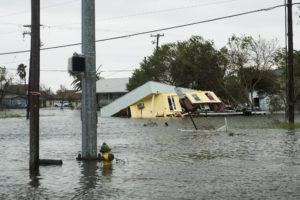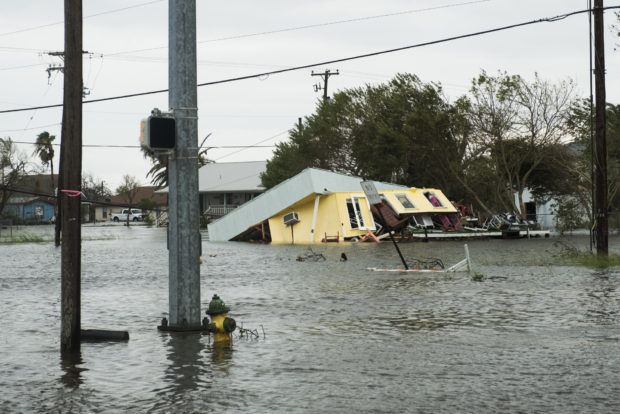
Hurricane Harvey is now a slow-moving tropical storm in coastal Texas. Beyond the initial storm damage itself, the historic flooding it is leaving behind will lead to equally significant economic and insured losses, catastrophe modeling firm RMS is predicting.
Harvey’s peak winds of 130 miles per hour long ago dropped off since it made landfall on the Texas coastline late Friday. But, as RMS noted in an ongoing series of blog updates, the hurricane is still causing significant damage in terms of torrential rainfall and flooding – trends, it said, that will harm homes and businesses with equal measure.
While it is early to accurately assess economic and insured losses, RMS’s analysis noted:
- Insured losses will likely at least hit in the low, single-digit billions.
- Some local areas may face 40 inches of total rainfall before Harvey dissipates.
- Expectations are that about 10 percent of Gulf of Mexico Offshore energy assets worth more than $20 billion (including drilling rigs, oil and gas platforms, wells, pipelines), could be adversely affected by Hurricane Harvey if forecast predictions hold.
The storm will likely meander over eastern Texas through the week, and could re-emerge over the Gulf of Mexico before making landfall on the Texas coastline as a much weaker storm.
During the first 12 hours of Harvey’s landfall alone, “catastrophic amounts of rain” hit coastal Texas.
Meanwhile, A.M. Best released commentary assessing the potential impact of Harvey on the U.S. property/casualty industry, noting that the National Flood Insurance Program will face more strain despite efforts it has taken to stabilize financing. (Congress is negotiating now how to renew the NFIP).
“The NFIP has been stressed by severe flooding events in recent years …. and now carries private reinsurance coverage to help maintain their claims paying abilities,” A.M. Best wrote.
Source: RMS





















 Why the Middle Market Matters and How Insurers Can Capture It
Why the Middle Market Matters and How Insurers Can Capture It  Slideshow: Carrier Management’s 2025 Top Editor’s Picks (Unlocked)
Slideshow: Carrier Management’s 2025 Top Editor’s Picks (Unlocked)  NOAA Announces Latest AI-Driven Global Weather Models
NOAA Announces Latest AI-Driven Global Weather Models  Nearly Half of 100 Largest P/C Insurers Destroy Value: ACORD
Nearly Half of 100 Largest P/C Insurers Destroy Value: ACORD 







